Fashion + Design > Fashion
August 10, 2022
“Start with small steps” – Sustainable Fashion Educator Daria Andronescu
Susanne Barta
Erinnert ihr euch? Fast drei Jahre ist es nun her, dass ich mit Daria Andronescu ein Gespräch für diesen Blog über ihr Projekt Wonder Wardrobe geführt habe. Einige Monate später trafen wir uns in Berlin auf der Neonyt und wieder einige Monate später in Düsseldorf, wo sie damals lebte. Vor einem Jahr ist Daria mit ihrem Mann Mircea nach Lissabon übersiedelt. Von dort aus betreut sie nun ihre weltweite Community. Ich war familien- und urlaubsbedingt diesen Sommer in Portugal und neugierig darauf, wie sich Wonder Wardrobe weiterentwickelt hat und was Daria gerade vorhat. Wir trafen uns in einem Café im Stadtteil Estrela und plauderten drauf los.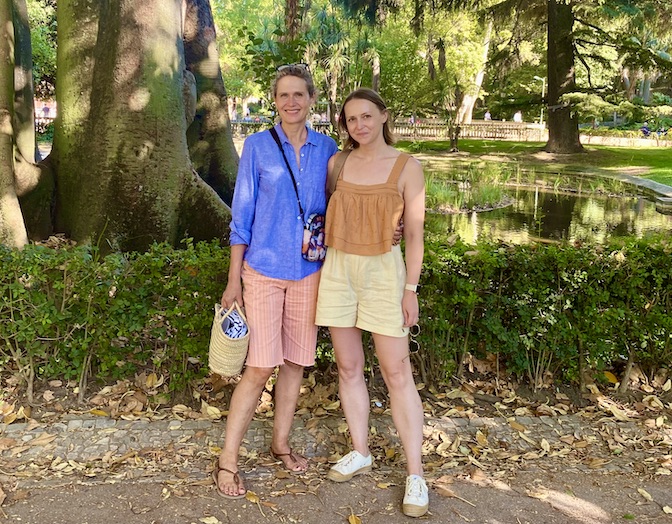 Zuvor aber noch einige Worte zu Darias Arbeit als Sustainable Fashion Educator: in ihren Videos, Online-Kursen, Newslettern und persönlichen Beratungen unterstützt Daria ihre Student*innen und Kund*innen dabei, einen persönlichen und nachhaltigen Zugang zu ihrem Kleiderschrank, zu ihrer Garderobe zu entwickeln. Ja, man kann das wirklich lernen. Schritt für Schritt Kleidungsstücke zu wählen und zu kombinieren, die wirklich zu einem passen, vor allem zu dem Leben, das man führt. Die aus gutem Material, langlebig und „interchangeable“ sind. Schluss also mit Fehlkäufen und verzweifeltem Starren in einen vollen Kleiderschrank. Das schont Ressourcen, reduziert Textilabfall und wer weiß, was zu einem passt, ist auch nicht so leicht Opfer schnelllebiger Trends. Daria hat eine, erfolgreich getestete, Methode dazu entwickelt, die Wonder Wardrobe Methode. Das Ergebnis? Ein persönlicher, multifunktionaler, gut organisierter Kleiderschrank mit einer idealen Anzahl an schönen Stücken, die untereinander optimal kombinierbar sind.
Zuvor aber noch einige Worte zu Darias Arbeit als Sustainable Fashion Educator: in ihren Videos, Online-Kursen, Newslettern und persönlichen Beratungen unterstützt Daria ihre Student*innen und Kund*innen dabei, einen persönlichen und nachhaltigen Zugang zu ihrem Kleiderschrank, zu ihrer Garderobe zu entwickeln. Ja, man kann das wirklich lernen. Schritt für Schritt Kleidungsstücke zu wählen und zu kombinieren, die wirklich zu einem passen, vor allem zu dem Leben, das man führt. Die aus gutem Material, langlebig und „interchangeable“ sind. Schluss also mit Fehlkäufen und verzweifeltem Starren in einen vollen Kleiderschrank. Das schont Ressourcen, reduziert Textilabfall und wer weiß, was zu einem passt, ist auch nicht so leicht Opfer schnelllebiger Trends. Daria hat eine, erfolgreich getestete, Methode dazu entwickelt, die Wonder Wardrobe Methode. Das Ergebnis? Ein persönlicher, multifunktionaler, gut organisierter Kleiderschrank mit einer idealen Anzahl an schönen Stücken, die untereinander optimal kombinierbar sind.
Daria, where do you stand right now with your ambitious project?
I can proudly say that Wonder Wardrobe is growing, we got a lot of new students over these years. In this sense the pandemic was good for us, most of us had more time and were open for rethinking their wardrobes. The Wonder Wardrobe course teaches them that they should wear clothes for themselves, for their own joy and not to please others. Now we have around 12.000 students around the world. We changed some things how we approach people and also work on new tools. During the pandemic people were sadder and lonelier, so we changed the way to present our content, being more personal. I did many live sessions for example. That helped a lot. Now we continue growing, also our team grew to four people. More people more passion. Your main goal you told me is to reduce fashion waste…
Your main goal you told me is to reduce fashion waste…
Yes, that is our mission as a company. That’s how I started. I noticed that people no matter where they come from and how much money they have all buy too many clothes and throw them away after a few wears. That creates a lot of waste and we have to deal with that. Fashion brands don’t deal with it mostly, so we as consumers have to learn how to do it. To wear our clothes longer and responsibly get rid of them.
Did the pandemic change the approach how people dress? What do you perceive?
I think that people who were already curious about sustainable living definitely changed a lot. They had the opportunity to stop and think about their actions and try to adjust their spendings. Our community changed and improved. But at a global level one can also see that people buy more and more after the pandemic, especially ultra-fast fashion brands, they are so cheap right now. You can buy a T-shirt for one Euro with free delivery and free returns. That’s really bad. But it’s so convenient, it’s kind of scary. So, on a global level I am quite skeptical. Even in my student community I can see that people spend more money on clothes after the pandemic. They want new clothes, want a new wardrobe. But at least in our community they know where to buy them and how to choose better, in terms of material, style, and interchangeability.  You moved to Lisbon a year ago. Quite a lot of sustainable brands produce in Portugal. What do you perceive living there? Are you in contact with sustainable producers?
You moved to Lisbon a year ago. Quite a lot of sustainable brands produce in Portugal. What do you perceive living there? Are you in contact with sustainable producers?
I went to Porto a couple of month ago to give a speech at one of the universities about sustainable fashion. A lot of people of the industry were there and I had a chance to talk to them and ask them some questions. What I found out is that most of the production is in Porto and in the North. There is not very much in Lisbon. And I had no idea that they have such huge productions here, they produce everything, starting from fibers and ending with zippers, buttons and jewellery. They have a strong tradition of craftsmanship and a careful attitude to making things. I met for example a lady who has a leather factory, they make leather for big Italian, French and Spanish luxury brands. And she said “we have always been sustainable; we know exactly where everything comes from and how everything is done”. Knowing where your leather comes from is a start, but it’s by no means sustainable. The leather industry is connected to the meat farming industry, one of the most polluting industries in the world. When you come as a tourist to Lisbon you can definitely find a lot of sustainable local brands in shops. The brands are young, fresh, interesting and quite affordable.
Do you have some tips for us? For the next travel to Lisbon?
Of course. I also made already friends with some Portuguese labels.
Here are my favourites:
1. Pera Lima
2. Mustique
3. Valonia Veras
4. Benedita Formosinho
5. Dream Catchers
So, sustainable fashion is an important topic in Portugal?
I think so, yes. But for some local brands it’s still too difficult to produce in Portugal, they can’t afford it and have to go to Africa or China. Because it’s cheaper there and because some factories don’t take small quantities. It shouldn’t be like that because sustainable fashion should be produced locally to avoid all the excess of transport etc. But sustainable fashion is here and the community is growing.  I am also intrigued about the fact that you started to do the four-day work week model recently. Please tell us more about it!
I am also intrigued about the fact that you started to do the four-day work week model recently. Please tell us more about it!
It’s going great. We have four people working in the company and we all do four days a week. With the same salary as before. It’s really interesting because we accomplish more than before in five days. You get some rest, you feel better, you are more productive and come to work with more ideas. It’s wonderful and I don’t know why the whole world is still doing five days or more. We work eight hours for four days, no one overworks. We don’t have deadlines, because they create stress. We want to have fun, enjoy the work. If we didn’t finish a piece, we finish it the next day. And if we finish faster and don’t have anything else to do, than we don’t do anything, its ok. When our company started to grow, I thought about how to approach it, what kind of company I wanted, what kind of relationships we should have and how to bring a sustainable lifestyle into the company. We have a very long journey ahead of us, problem solving is hard and I thought we can do this better with more balance. Because with a burn out we are not going to solve any problem.
Sounds amazing. And what can you tell people who would like to take their first steps into a more sustainable wardrobe?
I would definitely encourage people to try and change their attitude towards fashion. Because fashion is not all about new and disposable clothes. Fashion is art, styling is an art of dressing. If you think about it from a different perspective and try to understand the production of clothes and craftmanship behind it better, it has so much value. Most people forget about it and use it as a cheap treat. I love fashion with all my heart, so I would like to see more people being more respectful and more passionate about it and try to do better. But it takes time, you don’t become sustainable in one day and that’s ok. Just start slow, with small steps and if you want to join a community, there is so much out there already. It costs nothing to be into sustainable fashion, actually it’s much cheaper than to be a fast fashion fashionista. And it carries more meaning and has more value.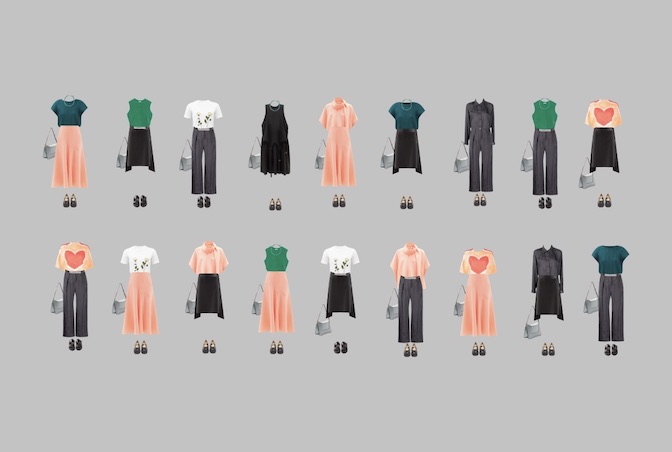 Wenn ihr euch bei diesem Weg unterstützen lassen möchtet, schaut rein bei Daria und ihren Wonder-Wardrobe-Kursen oder schaut euch einfach mal auf ihrem Youtube-Kanal um.
Wenn ihr euch bei diesem Weg unterstützen lassen möchtet, schaut rein bei Daria und ihren Wonder-Wardrobe-Kursen oder schaut euch einfach mal auf ihrem Youtube-Kanal um.
Es ist ja alles andere als einfach, sich im nachhaltigen Modebereich zu etablieren und von seiner Arbeit leben zu können. Geschweige denn, ein kleines Team aufzubauen, das das auch kann. Vor allem nicht im Content Bereich. Umso inspirierender ist Darias Weg und ihre konsequente Haltung, Nachhaltigkeit nicht nur in der Mode, sondern auch als Lebensstil zu propagieren und umzusetzen. Ohne Anspruch auf Perfektion.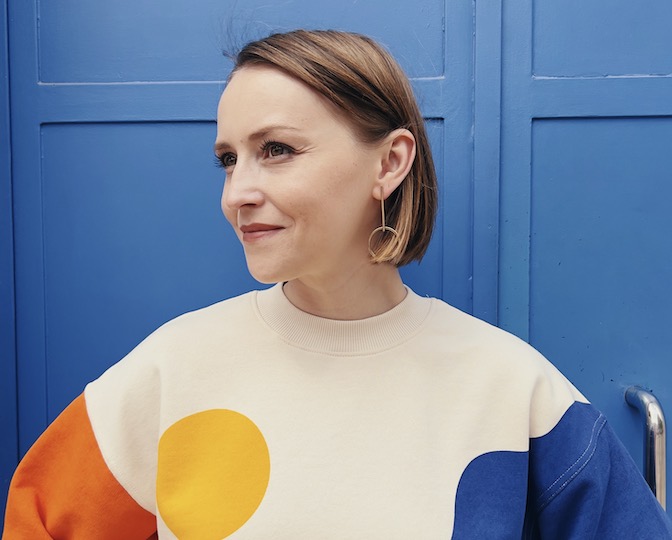 Fotos: (1) © Wonder Wardrobe/Daria Andronescu; (2) © Susanne Barta; (3) Fashion Online Course © Wonder Wardrobe/Daria Andronescu; (4) Spring Summer Capsule inspired by art © Wonder Wardrobe/Daria Andronescu; (5) Newsletter Color Analysis © Wonder Wardrobe/Daria Andronescu; (6) Summer Capsule Closet Checklist 2022 © Wonder Wardrobe/Daria Andronescu; (7) © Wonder Wardrobe/Daria Andronescu
Fotos: (1) © Wonder Wardrobe/Daria Andronescu; (2) © Susanne Barta; (3) Fashion Online Course © Wonder Wardrobe/Daria Andronescu; (4) Spring Summer Capsule inspired by art © Wonder Wardrobe/Daria Andronescu; (5) Newsletter Color Analysis © Wonder Wardrobe/Daria Andronescu; (6) Summer Capsule Closet Checklist 2022 © Wonder Wardrobe/Daria Andronescu; (7) © Wonder Wardrobe/Daria Andronescu

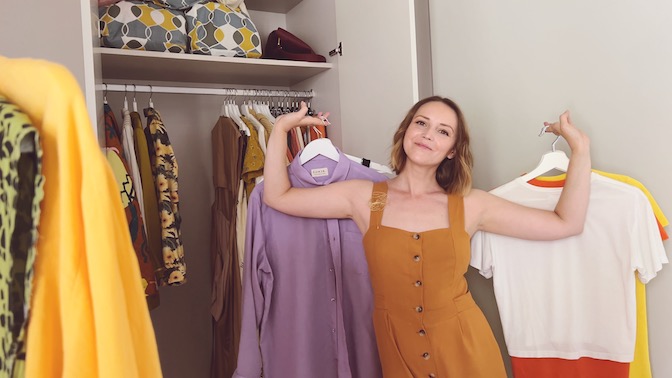









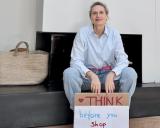
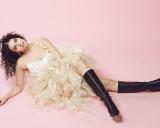
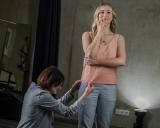

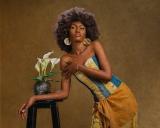
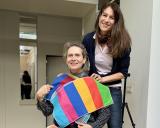

Comments